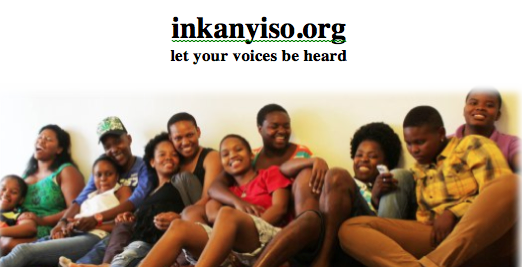July 12, 2011, by Melanie Nathan,
 The Supreme Court of Ohio today upheld lower court rulings that a biological mother who acknowledged her same-sex partner as a “co-parent” of her daughter while the two women were in a relationship did not permanently give up her sole custody of the child to create legal shared custody with the partner.
The Supreme Court of Ohio today upheld lower court rulings that a biological mother who acknowledged her same-sex partner as a “co-parent” of her daughter while the two women were in a relationship did not permanently give up her sole custody of the child to create legal shared custody with the partner.
In a 4-3 decision authored by Justice Robert R. Cupp, the Court affirmed a 1st District Court of Appeals ruling that competent, credible evidence supported the Hamilton County Juvenile Court’s judgment that although Kelly Mullen of Cincinnati shared the responsibilities of parenting her daughter Lucy with former partner Michele Hobbs while the women lived together, Mullen’s actions did not confer on Hobbs a permanent right to shared custody of Lucy after her relationship with Mullen ended.
Shortly after Mullen and Lucy moved out the house they had shared with Hobbs, Hobbs filed a complaint in juvenile court seeking equal and shared custody and visitation rights with Lucy. Hobbs claimed that Mullen’s acknowledgement of her role as Lucy’s “co-parent” in several documents and Hobbs’ participation in parenting duties during the time she and Mullen shared a home had created a contractual agreement between the women to permanently share legal custody of the child.
A magistrate who reviewed the evidence concluded that Mullen had created a binding agreement to permanently share partial custody of her daughter with Hobbs because the two women had jointly planned Mullen’s insemination and pregnancy and shared parental duties; Hobbs had been identified as Lucy’s “co-parent” in documents including a ceremonial birth certificate; and Mullen had named Hobbs in her will to act as Lucy’s guardian in the event of her death and had also executed general and health care powers of attorney allowing Hobbs to make school, health care and other decisions for Lucy.
Mullen filed objections to the magistrate’s report, pointing out that each of the documents in which she had granted Hobbs some form of “parental” rights over Lucy had been revocable, and that Mullen had in fact revoked them since ending her relationship with Hobbs. She also noted that although Hobbs had suggested executing a written agreement explicitly granting Hobbs shared custody of Lucy on several occasions, Mullen had declined to do so.
The juvenile court rejected the magistrate’s report and concluded that a preponderance of the evidence showed that Mullen had not permanently surrendered partial custody of Lucy to Hobbs. Based on that finding, the trial court dismissed Hobbs’ custody petition without considering whether granting her joint custody would be in the best interest of the child. Hobbs appealed. On review, the 1st District Court of Appeals affirmed the trial court’s order of dismissal. Hobbs sought and was granted Supreme Court review of the 1st District’s decision.
Writing for the majority, Justice Cupp said past Supreme Court decisions have held that “(T)he determination of whether a ‘parent relinquishes rights to custody is a question of fact which, once determined, will be upheld on appeal if there is some reliable, credible evidence to support the finding.’ … If similar findings are made by the trial and appellate courts, this court must accept those findings unless there is no evidence of probative value to support them.”
While acknowledging that Hobbs presented significant evidence in support of her claim to partial custody of Lucy, Justice Cupp noted that the juvenile court had also considered counter-evidence submitted by Mullen disputing that claim. He wrote: “The court noted that all the documents created by Mullen which purported to give Hobbs some custodial responsibilities not only were revocable, but were, in fact, revoked by Mullen. Testimony supported Mullen’s statement that she did not intend to relinquish sole custody of the child to Hobbs. The juvenile court also stated that although the evidence was unclear whether a shared custody agreement was actually drafted by the parties or presented to Mullen, the evidence did show that Mullen consistently refused to enter into or sign any formal shared custody agreement when presented with the opportunity to do so.”
“On this conflicting and disputed evidence, the juvenile court concluded that there was reliable, credible evidence that Mullen’s conduct did not create an agreement to permanently relinquish sole custody of her child in favor of shared custody with Hobbs. In accordance with its standard of review, the appellate court reviewed the evidence presented to the juvenile court and noted that there was strong evidence supporting both Mullen’s and Hobbs’s positions. However, of particular interest to the appellate court was the evidence that the juvenile court relied on to conclude that although Mullen and Hobbs had shared responsibilities for the child, Mullen had not agreed to permanently cede partial custody rights. The appellate court determined that ‘taken as a whole,’ reliable, credible evidence supported the juvenile court’s findings that Mullen had not permanently given over partial legal custody of the child. … The appellate court declined to disturb that decision.”
“We conclude that the appellate court applied the proper standard of review in this matter. We also conclude that the appellate court did not err when it affirmed the juvenile court’s decision to dismiss Hobbs’ complaint for shared custody of the child. … (A)s the juvenile and appellate courts noted, we also observe that the best way to safeguard both a parent’s and a nonparent’s rights with respect to children is to agree in writing as to how custody is to be shared, the manner in which it is shared, and the degree to which it may be revocable or permanent, or to apply to a juvenile court for an order under R.C. 2151.23(A)(2) establishing the scope of the legal custody that the parent desires to share, or both.”
“Because the holdings of the juvenile and appellate courts are supported by the evidence and are not clearly against the manifest weight of the evidence, we must accept those findings. … Accordingly, like the appellate court, we decline to disturb the juvenile court’s decision. … We hold that competent, credible, and reliable evidence supports the juvenile court’s conclusion that Mullen did not create an agreement to permanently relinquish sole legal custody of her child in favor of shared legal custody with Hobbs. Consequently, the juvenile court may not reach the questions of whether Hobbs is a suitable person to be a custodian of the child or whether shared legal custody is in the child’s best interests.”
Justice Cupp’s opinion was joined by Justices Evelyn Lundberg Stratton, Terrence O’Donnell and Judith Ann Lanzinger. Chief Justice Maureen O’Connor and Justice Paul E. Pfeifer entered separate dissenting opinions.
In her dissent, which was joined by Justice Yvette McGee Brown, Chief Justice O’Connor wrote that because the statutory and case law applicable to Hobbs’ claim is well established, and the majority decision established no new governing principle, she would dismiss the appeal as having been improvidently accepted for review.
The Chief Justice noted that nearly 10 years have passed since this Court last addressed the issue of what evidence is sufficient to establish a natural parent’s grant of shared custody of a child to a non-parent in In re Bonfield (2002). She observed, “Nothing in Bonfield or our prior decisions mandated that an agreement to relinquish sole custody be in writing. But as the facts of this case show, prudence now dictates that the agreement be documented.” Chief Justice O’Connor wrote that Bonfield provides guidance in cases in which a parent appears in court with a nonparent and expresses a clear desire to share custody of the child with the nonparent, but that Bonfield “ is of limited value in cases like this one, in which the parties now dispute that shared custody was ever intended or granted. … Although not required, a written agreement will demonstrate the best evidence of the parent’s intention to share custody, particularly in cases, like this one, in which the evidence stands in near equipoise. It is the preferred method of demonstrating the knowing and intelligent surrender of the parent’s fundamental right, in whole or in part, and reinforces to both the parent and the proposed custodian the concomitant rights and responsibilities that are associated with custody of a child.”
Justice Pfeifer wrote that the trial court relied in error upon certain testimony, and that the evidence presented by Hobbs was more than sufficient to establish that Mullen had agreed to cede partial custody to Hobbs. Justice Pfeifer stated that the trial court had incorrectly relied on testimony that Mullen had declined on several occasions to execute a written agreement (known as a Bonfield agreement) explicitly granting Hobbs shared custody of Lucy. Justice Pfeifer wrote, “The lack of a Bonfield agreement does not negate the fact that an agreement to share custody already existed before Lucy was even born. A Bonfield agreement was not necessary.” He also wrote that the trial court had erred in concentrating on the resolvability of the documents in which Mullen pledged that she considered Hobbs a “co-parent in every way”:
“Can an agreement that another person is a coparent in every way possibly not include a right to custody? It cannot. The trial court seems to agree, and thus turns its emphasis on the fact that the documents were revocable. But the question before the court was whether Mullen agreed to share custody of her child with Hobbs, not whether she eventually came to regret that decision. Whether the documents were revocable is a red herring. The true question is when they were revoked. Executed before Lucy was born, they were not revoked when Lucy was born, when she was one year old, or even when the couple sought counseling because of difficulties in the relationship. Not until the pair separated after Lucy’s second birthday did Mullen revoke the statement, ‘I consider Michele Hobbs as my child’s co-parent in every way.’ Any reliance on what Mullen did after she separated from Hobbs was error.”
Justice Pfeifer opined that the majority opinion failed to produce a workable rule to deal with similar cases: “The law has not caught up to our culture, and this court has failed to craft a rule that addresses reality. Mullen and Hobbs employed a well-versed lawyer who represents people in their situation, and with his advice did all they could do to protect Hobbs. A maternal relationship existed between Hobbs and Lucy. Mullen taught her daughter to call another woman ‘Momma’ and to love her as a mother. She now wishes she hadn’t, and for the majority, that’s enough. It shouldn’t be.”
2010-0276. In re Mullen, Slip Opinion No. 2011-Ohio-3361.
Hamilton App. Nos. C-090285 and C-090407, 185 Ohio App.3d 457, 2009-Ohio-6934. Judgment of the court of appeals affirmed.
Lundberg Stratton, O’Donnell, Lanzinger, and Cupp, JJ., concur.
O’Connor, C.J., and Pfeifer and McGee Brown, JJ., dissent.
 View oral argument video of this case.
View oral argument video of this case.
2011-Ohio-3361http://www.scribd.com/embeds/59881870/content?start_page=1&view_mode=list&access_key=key-14p4s2cycz3as05t2zu2//
2011-Ohio-3361 http://d1.scribdassets.com/ScribdViewer.swf




















 PoochParkWear customizes hoodies and t-shirts, the good, the naughty, the in between, whether proud or quirky let them be seen. We also offer biker jackets, croc or pleather collars, a variety of collar charms, and our special Zinja beaded collars made by a co-op of HIV-positive South African women, the Sisonke women who weave the beads onto the collars.
PoochParkWear customizes hoodies and t-shirts, the good, the naughty, the in between, whether proud or quirky let them be seen. We also offer biker jackets, croc or pleather collars, a variety of collar charms, and our special Zinja beaded collars made by a co-op of HIV-positive South African women, the Sisonke women who weave the beads onto the collars.

How can this happen in the year 2011? HOW? Isn’t the courts opinion supposed to be “in the best interest of the child”? I challenge the four judges that allowed this decision to pass to look that child in the eye and tell them – “I know you used to have two mommies, but now you only have one” and why? REALLY?
As a parent fighting the same battle with a seven year old that has called me mommy since the age of 3 months, the form of our law does not meet the needs of function and therefore does not offer the protection it should – for parents, our children and siblings.
What is an even bigger shame is that the biological mother I am sure wants equal rights as a member of the lesbian community and can turn around and use those same inequalities and injustices for her gain!